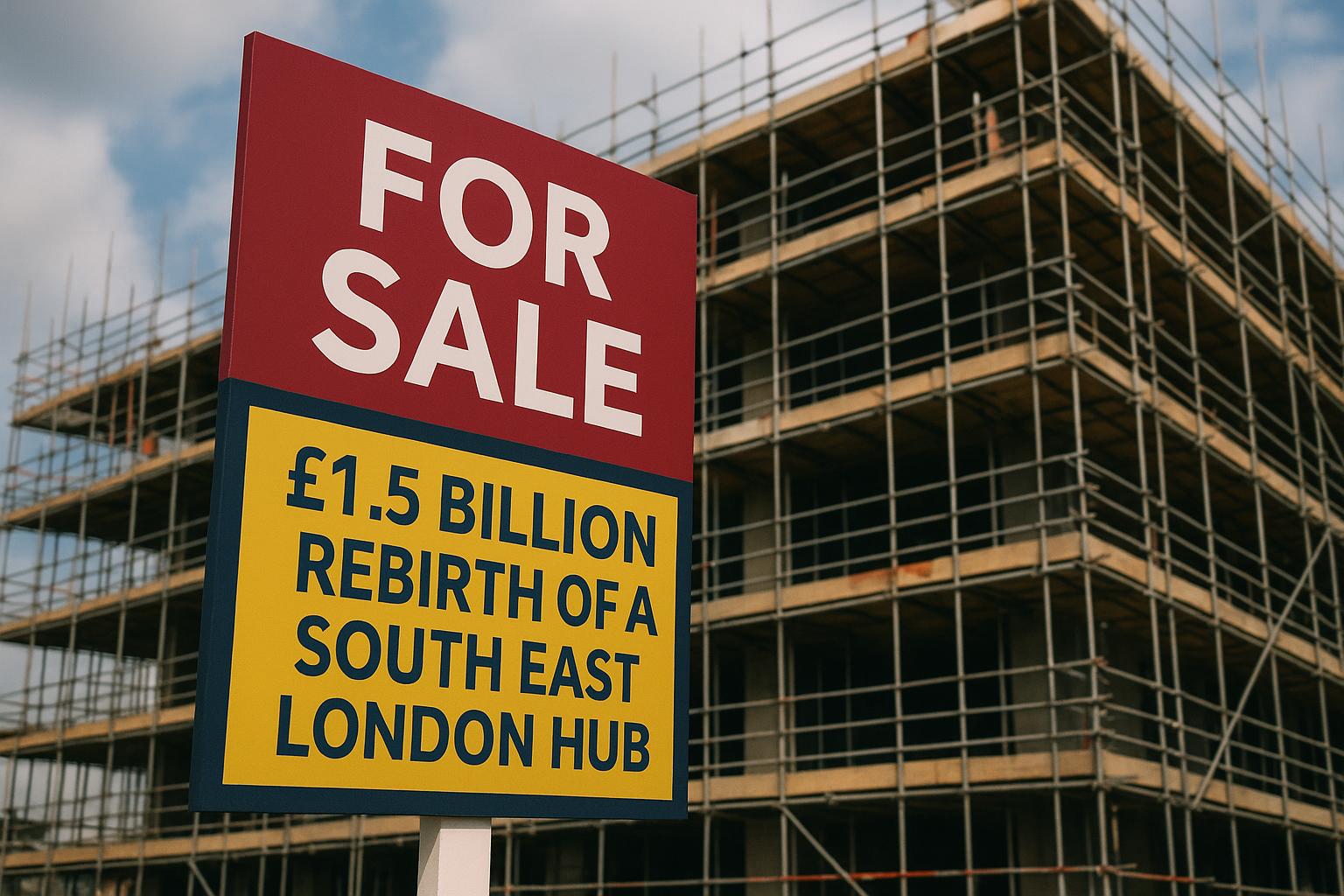Lewisham Council has given the green light to a major redevelopment project that will transform the Lewisham Shopping Centre site in South East London. The ambitious plans, led by developer Landsec, involve demolishing the 1970s shopping centre and its multi-storey car park to make way for new tower blocks reaching up to 35 storeys. The development promises to deliver 1,744 new homes alongside 661 student bedrooms and 445 co-living units, marking a significant addition to the borough’s housing stock over the next decade.
The redevelopment is framed as a £1.5 billion investment aimed at rejuvenating Lewisham town centre. According to Landsec’s Development Director Jon Watson, the project will preserve the shopping centre’s operation throughout the transformation and is designed to support local businesses, attract new brands, and create greener, more welcoming spaces. The masterplan envisages tiered parks, streets, and over 300 new trees across the 17-acre site, complemented by three new public squares and a permanent home for the Lewisham Model Market, a popular food court that closed in 2019. A 500-capacity cultural venue for music, arts, and community events will also be included, seeking to enhance the town centre’s cultural appeal.
While the scale and ambition of the project have garnered support, the development has been dogged by controversy surrounding its provision of affordable housing. The plans allocate only 20% of the 1,744 homes as affordable, falling short of Lewisham Council’s target of 50%. Out of 329 affordable homes, just 98 are designated for social rent, with the remainder aimed at key workers renting at discounted market rates. This shortfall has fuelled significant criticism from community campaigners and councillors alike, particularly in a borough where roughly 10,000 households remain on the council’s housing waiting list and over 2,800 families are in temporary accommodation.
Faris, a lead organiser from the Save Lewisham Shopping Centre Campaign, addressed the council’s Strategic Development Committee directly, condemning the decision as a gamble with residents’ housing futures. The group has actively campaigned against the proposals, launching a petition that garnered over 1,500 signatures and highlighting the acute affordability crisis in the area. They argue the development fails to meet the fundamental needs of local people and perpetuates a wider pattern of under-delivering on social housing commitments.
Political voices within the council echoed these concerns. Green councillor Hau-Yu Tam questioned the imbalanced housing offer, emphasising the moral and policy implications of approving a scheme with less than 5% social rent housing. She stressed the urgency of adhering to recently adopted local plans that prioritise affordable housing to address homelessness and overcrowding, and warned about sending the wrong message to developers by allowing exceptions based on viability assessments. Planning officers responded by explaining that national policy requires affordable housing contributions to be subject to financial viability, and that Landsec had maximised the affordable element within those constraints.
The planning approval was unanimous among the six councillors present, although two eligible councillors missed the vote due to a break, sparking public outrage from attendees who voiced their displeasure. The decision also faced objections from prominent local stakeholders including Sainsbury’s, Primark, and Greenwich Council. Critics expressed worries about the visual impact of tall buildings on protected views towards Eltham Park, Blackheath, and the Maritime Greenwich World Heritage Site.
Adding to the complexity, Lewisham House No. 1—owner of the former Citibank office building—has submitted competing proposals to convert that tower into a co-living space. Their representatives argued their plans are more financially viable and could deliver housing benefits sooner than the broader Landsec-led masterplan, requesting the council to defer approval of the shopping centre redevelopment to reconsider these alternatives.
Despite the controversies, the development is set to inject significant economic activity into the borough, with projections suggesting it could generate £160 million annually. Financial contributions from the scheme include £5 million in Section 106 funding for town centre improvements, £500,000 towards Lewisham Station upgrades, and an estimated £16.9 million through the Community Infrastructure Levy to support local infrastructure projects. The council is currently consulting on a revised Charging Schedule that could increase these funds to £28.4 million, including an additional levy payable to City Hall.
Sustainability has also been a focus of the project, with Bioregional working alongside Landsec and U+I since 2021 to embed environmental standards across the development. The strategy spans a range of concerns, including embodied carbon reduction and circular economy principles, aiming to ensure the long-term sustainability of the new town centre.
Overall, the Lewisham Shopping Centre redevelopment exemplifies the challenges facing urban renewal in London—balancing the need for new housing and economic revitalisation with calls for affordable homes and community preservation. While supporters envision a modernised, thriving Lewisham, campaigners warn of accelerated gentrification and unmet social obligations, underscoring the ongoing tensions shaping London's housing and development landscape.
📌 Reference Map:
- Paragraph 1 – [1], [5], [2]
- Paragraph 2 – [1], [2], [5], [6]
- Paragraph 3 – [1], [3], [5]
- Paragraph 4 – [1], [3]
- Paragraph 5 – [1]
- Paragraph 6 – [1], [4]
- Paragraph 7 – [1], [7]
- Paragraph 8 – [2], [4], [1]
- Paragraph 9 – [6]
- Paragraph 10 – [1], [3], [4]
Source: Noah Wire Services
